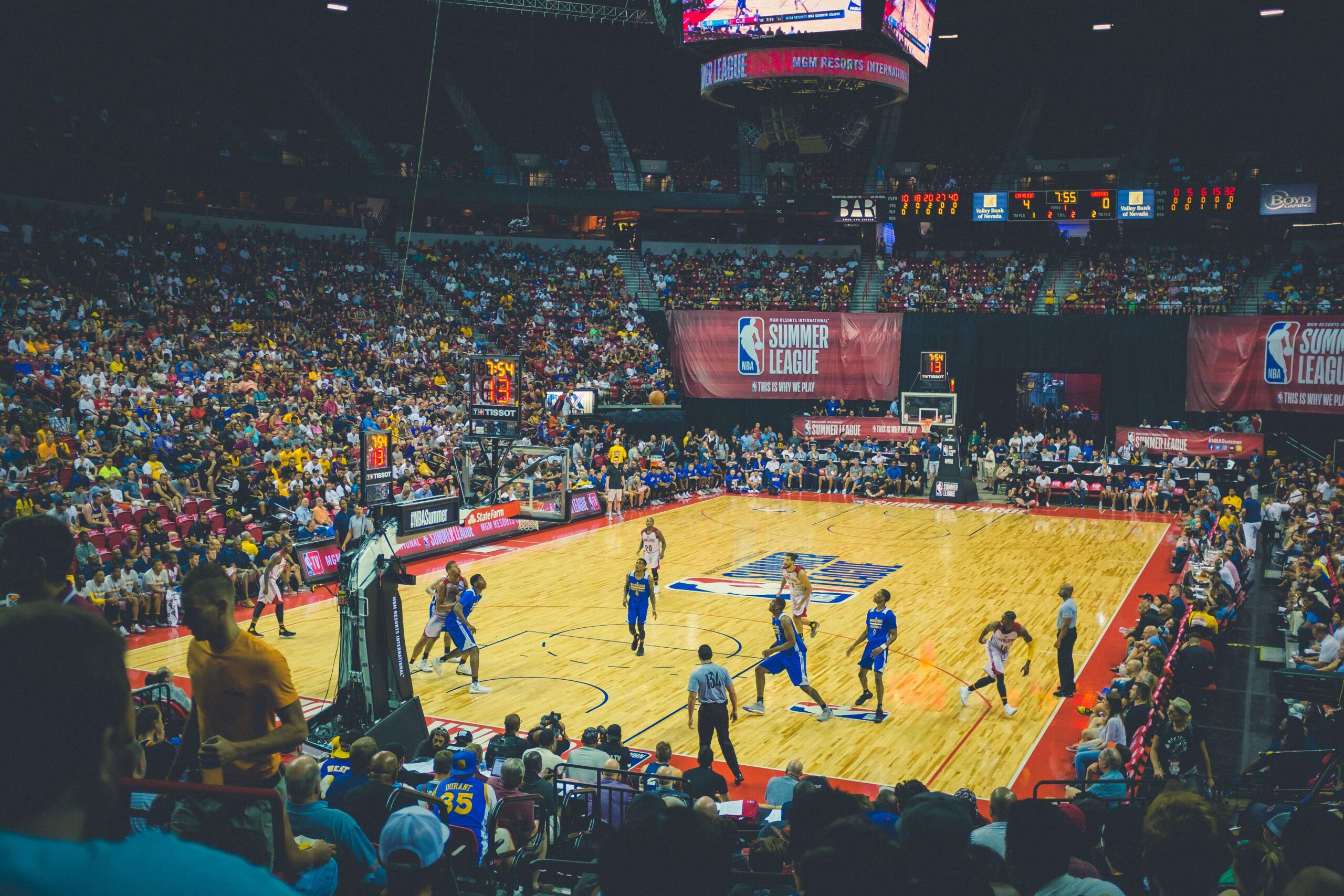Find the best Colorado State vs. Maryland betting odds here. Both the Colorado State Rams and Maryland Terrapins impressed in the first round to set up this intriguing 4 vs. 12 matchup. Colorado State, a 12-seed, upset No. 5 Memphis 78-70 behind a barrage of threes from freshman Kyan Evans. The Rams erased a 5-point halftime deficit as Evans sank six 3-pointers en route to 23 points.
Senior wing Nique Clifford chipped in 14 points, 8 rebounds, and 6 assists, extending CSU’s win streak to 11 games. Maryland, the 4-seed, cruised past No. 13 Grand Canyon 81-49, dominating start to finish. Forward Julian Reese led with 18 points and 9 boards, while freshman center Derik Queen logged a 12-point, 15-rebound double-double.
The Terrapins’ 32-point blowout was the largest margin in school tournament history. Now, a Sweet 16 berth is on the line as Maryland’s balanced attack meets a red-hot Colorado State squad.
Check here all the best March Madness betting promos before looking at our preview.
Key Players to Watch
🔑 Colorado State Rams
Nique Clifford, G/F (Sr.)
The 6’6” Clifford is the Rams’ do-it-all star and Mountain West Tournament MVP. He stuffs the stat sheet with 18.9 PPG, 9.7 RPG, 4.4 APG, leading CSU in scoring, rebounding, and playmaking. A versatile wing, Clifford scores efficiently (49.9% FG) and hits 39% from deep. His length and athleticism will be pivotal on defense against Maryland’s frontcourt. Clifford had a “quiet” 14-point outing in Round 1, so expect him to be more assertive as the Rams’ go-to guy in this matchup.
Kyan Evans, G (Fr.)
Evans exploded onto the scene with 23 points (6-of-8 from three) in CSU’s first-round win. Usually averaging 10.6 PPG on the season, the 6’2” freshman showed he can rise to the occasion. He’s a 44% 3-point shooter who gives the Rams a perimeter spark. Evans’ confidence will be key – if he stays hot, he stretches Maryland’s defense and opens the floor for Clifford and others.
Jalen Lake, G (Sr.)
A veteran sharpshooter, Lake adds 11.2 PPG for CSU. He made 66 threes at a 35% clip this year and is a secondary scoring option teams can’t ignore. Lake’s experience (senior guard with 30+ MPG) helps steady the young backcourt. Watch for him spotting up in transition or off kick-outs when Maryland’s defense collapses on Clifford. His scoring and leadership will be an X-factor in supporting the Rams’ stars.
🔑 Maryland Terrapins
Derik Queen, C (Fr.)
The Big Ten Freshman of the Year has been a force down low. Queen leads Maryland with 16.2 PPG and 9.2 RPG, shooting 52.7% from the field
. At 6’9” 250 lbs, he’s a skilled post scorer who also draws fouls (206 FTA on the season, 75.7% FT). Queen recorded a double-double (12 pts, 15 reb) in the first round.
His matchup against CSU’s undersized frontcourt could be a decisive advantage for Maryland – expect the Terps to feed him often in the paint. Defensively, Queen’s 1.1 blocks and 1.1 steals per game show his impact protecting the rim and hedging pick-and-rolls.
Julian Reese, F (Jr.)
A veteran 6’9” forward, Reese is the emotional leader for Maryland. He’s averaging 13.3 PPG, 9.0 RPG while shooting 55% inside. Reese was tremendous against Grand Canyon with 18 points and 9 rebounds, controlling the paint alongside Queen.
He’s a high-energy rebounder and a rim-runner in transition. Reese and Queen form a twin-tower duo that gave Maryland a +12 rebounding edge in Round 1. Watch for Reese’s hustle plays – second-chance putbacks, drawn charges, and contests at the rim – that can swing momentum.
Ja’Kobi Gillespie, G (So.)
Maryland’s sophomore point guard is the engine in the backcourt. Gillespie chips in 14.7 PPG, 4.9 APG, 1.9 SPG, offering a little of everything. He’s a 41% 3-point shooter (82 makes) who can also attack off the dribble. Notably, Gillespie takes care of the ball extremely well – only 1.9 turnovers per game despite playing 31+ minutes. His 2:1 assist-to-turnover ratio keeps Maryland’s offense efficient. Defensively, his quick hands spearhead the Terps’ pressure (Maryland forces 14+ turnovers a game, many via Gillespie’s steals). If Gillespie dictates tempo and neutralizes CSU’s guards, Maryland will be tough to beat.
(Other notable Terps: Rodney Rice (13.8 PPG, 37% 3PT) and Selton Miguel (12.0 PPG, 42.9% 3PT) provide additional perimeter firepower. Maryland’s “Crab Five” starting lineup all averaged double figures, illustrating this team’s balance.)
Betting Odds and Market Outlook
Point Spread: Maryland -7.5 (Colorado State +7.5)
Moneyline: Maryland approx. -265 favorite (CSU +215 underdog)
(Implied win probability ~75% Terrapins)Over/Under: 142.5 total points (opened at 142.5 and holding steady)
Oddsmakers installed Maryland as a solid favorite, expecting them to win by around 7-8 points on a neutral floor. The opening line of Maryland -7.5 reflects respect for the Terps’ higher seed and dominant first-round performance.
Bettors initially jumped on Maryland (about 58% of early bets) causing slight juice adjustments, but the line has hovered around -7 to -7.5. The moneyline of roughly -265 implies Maryland has about a three-in-four chance to advance, whereas CSU’s +215 odds give the underdogs around a 28% shot.
The total opened 142.5 points, indicating the market expects a moderately paced, mid-70s scoring output from each side. Interestingly, early action was heavily on the Over (80%+ of bets), and some books ticked the number up to 143.5. This suggests bettors anticipate that Maryland’s offense and Colorado State’s shooters will produce a higher-scoring game. The spread + total “implied score” is about Maryland 76 – Colorado State 68.
In other words, the betting market expects Maryland to advance with a degree of comfort, but not a blowout, and for the game to be relatively high scoring (by NCAA tournament standards).
Market Perspective
As a 12-seed, Colorado State is a popular underdog – they just knocked off a 5-seed and are 11-0 ATS in their last 11 games (they were even favored vs. Memphis). Meanwhile, Maryland has covered 8 of its last 11 and looked dominant in round one.
Something to note: Colorado State has thrived in close games (6-2 in games decided by 6 points or fewer) while Maryland has had some hiccups in tight finishes (6-8 in close games).
Bettors backing CSU +7.5 are essentially betting that the Rams can keep it competitive until the final horn, even if Maryland leads most of the way. The Over bets imply confidence that both teams will reach their season scoring averages despite the quick tournament turnaround and the Terps’ strong defense.
Team Strengths and Weaknesses
📊 Colorado State Rams
Strengths
Offense is the calling card for CSU. The Rams run a beautifully efficient attack that shares the ball (16.5 assists per game) and shoots at a high clip. Since New Year’s Eve, Colorado State has been one of the nation’s hottest offensive teams, connecting on 58% of its two-point shots (17th nationally) and 40% of its threes (6th nationally). They spread the floor with multiple shooters and use quick ball movement to find the open man – evidenced by a high assist rate (63% of made baskets are assisted, 8th in D-I).
Nique Clifford is a strength unto himself; his ability to score at all three levels and facilitate makes the Rams offense versatile and difficult to guard. Defensively, CSU is better than many realize. They were the 3rd-best defensive team in the Mountain West, and in KenPom terms they rank top-50 nationally in adjusted defense (allowing ~98.6 points per 100 possessions).
This team plays sound positional defense, closes out well on shooters, and cleans the defensive glass (opponents grab only 25.9% of offensive rebounds). Another plus: the Rams are battle-tested and riding a wave of momentum – they haven’t lost in over a month and have consistently outperformed expectations during their 11-game win streak.
Weaknesses
Colorado State can be vulnerable in a few areas. They are not a physically imposing team in the paint – the Rams lack a true rim-protecting big man (they block just 2.7 shots per game on average, with a low 7.8% block rate on defense).
This could spell trouble against Maryland’s frontcourt duo. Likewise, CSU isn’t aggressive about forcing turnovers; their defense generates only ~11.3 opponent turnovers per game (TO% 16.9%, rank 190).
If they sit back and let Maryland get comfortable, the Terps’ offense could grind them down. On the flip side, CSU’s own ball security is merely average – about 11–12 turnovers per game (they had 13 giveaways vs. Memphis).
Against Maryland’s active hands, there’s risk the Rams cough it up at inopportune times. Another weakness is Colorado State’s relative lack of offensive rebounding. They prioritize getting back on defense over crashing the boards, resulting in only 7.0 offensive rebounds per game (rank 324).
If shots aren’t falling, they don’t get many second chances. Finally, one could question depth and fatigue: CSU leans heavily on its starters (Clifford and Lake play 35+ minutes). In the quick two-day turnaround, legs could tire, which might affect shooting accuracy late. The Rams must prove they can match the high-major size and athleticism of Maryland for 40 minutes.
📊 Maryland Terrapins
Strengths
Maryland is a balanced team with very few glaring weaknesses – hence their top-10 status in most analytics. Defense is where the Terps hang their hat. Maryland boasts an elite defense, ranked No. 4 in adjusted defensive efficiency (approx. 90.8 points allowed per 100 possessions). They are long, disciplined, and aggressive. On average, Maryland holds opponents to just 66.5 points per game on 41% shooting. They excel at contesting shots (opponents’ eFG% only 46.6%, 20th nationally), especially at the arc – teams hit just 30.4% from three against Maryland.
This perimeter defense will be critical against CSU’s shooters. The Terps also force about 14 turnovers a game, using active hands and traps (their 20.2% defensive TO rate ranks top-40). Offensively, Maryland has tremendous balance and firepower. All five starters average at least 12.0 PPG, so there’s no one single player to key on – if you focus on Queen inside, guards like Gillespie, Rice, or Miguel will burn you from outside. Maryland scores 81.6 PPG as a team, with a solid mix of inside and outside scoring.
They shoot 37.3% from three (26th nationally)and 53.9% eFG overall, showing they can score efficiently. Importantly, turnover avoidance is a strength – the Terps commit under 10 turnovers per game (9.8, rank 47) thanks to Gillespie’s steady point guard play. In a tournament setting, that kind of ball security is huge. Another strength: Maryland plays at a tempo that can speed up opponents. They like to push in transition off rebounds or turnovers (around 69.7 possessions per game, 57th-fastest).
If they dictate a faster pace, it could tire CSU and create easy baskets. Lastly, Maryland’s confidence has to be high after an 81-49 romp – their depth and talent were on full display, with even bench guys contributing (“Crab Five” starters all in double figures, plus key bench sparks). This is a well-rounded, well-coached squad peaking at the right time.
Weaknesses
It’s hard to find obvious flaws in Maryland’s profile. One area to watch is their performance in tight games. Despite their talent, the Terps at times let teams hang around – they went just 6-8 in games decided by single digits this season.
If this game is closer than expected late, will Maryland execute? In terms of style, Maryland’s offense can occasionally stall if perimeter shots aren’t falling; they are slightly less efficient in half-court sets if forced to rely purely on jump shooting. While they have capable shooters, the Terps are actually somewhat selective from three (only ~35% of their shot attempts are from deep).
If CSU packs the paint in a zone to slow Queen/Reese, Maryland will need guys like Rice, Miguel, and Gillespie to hit from outside consistently. Another potential weakness is free-throw shooting under pressure – Maryland shoots a respectable 74.6% from the line as a team, but in a tight finish those misses can add up (we saw them lose by 1 in the Big Ten semis after a late missed FT). Also, Maryland’s offensive rebounding is average (9.1 per game), so they’re not a team that generates a ton of second-chance points; if CSU can force initial misses, they usually can end the possession.
Foul trouble could be a concern if Queen or Reese pick up early fouls battling Clifford – Maryland isn’t as deep in the frontcourt, and a key big sitting would open the door for CSU. Overall, these are minor nitpicks – on paper Maryland is the more complete team – but if the Terps get complacent or feel the pressure of expectations, a sharp Colorado State team is capable of exploiting any lapse.
KenPom and Advanced Metrics
This matchup features an interesting contrast in statistical profiles. According to KenPom (adjusted efficiency metrics):
Maryland
Adj. Offensive Efficiency ~118.3 (23rd nationally) and Adj. Defensive Efficiency ~90.8 (4th nationally).
That elite defense + very good offense gives Maryland an overall KenPom ranking around the top 10. They play at a tempo of about 69.7 possessions per 40 minutes (rank 57), indicating they won’t shy away from pushing the ball.
Maryland’s advanced stats underscore their balance: they rank top-30 in 3P%, defensive 3P% allowed, and turnover margin. An interesting nugget: Maryland’s effective FG% differential (offense eFG 53.9% vs. defense eFG 46.6%) is among the best in the Sweet 16 field, a testament to their efficiency on both ends.
Colorado State
Adj. Offensive Efficiency ~116.6 (37th nationally) and Adj. Defensive Efficiency ~98.6 (48th). The Rams’ offensive efficiency is not far behind Maryland’s – this is a top-40 offense capable of putting up points on anyone.
Defensively, they rank roughly top-50, which aligns with how they performed in the MWC. Overall KenPom rating puts CSU around 40th in the country (which, notably, is higher than a typical 12-seed). One big disparity is tempo: CSU’s adjusted tempo is about 66.1 possessions (rank 244).
They prefer a more deliberate, half-court game. The Rams value each possession, run sets to get quality looks, and generally avoid frantic pace. This slower tempo, combined with their excellent shooting percentages (eFG 55.7%, 25th), allows them to methodically out-efficient opponents. In short, CSU will try to slow it down and execute, while Maryland might aim to speed it up and let depth/athleticism take over.
Key Advanced Stats to Watch
Maryland’s defensive turnover rate (they thrive if they can turn you over > ~15 times) versus CSU’s careful offense. Also, the battle of effective field goal percentage – CSU’s offense (55.7% eFG) vs Maryland’s defense (46.6% eFG allowed) – strength on strength. Whichever side comes closer to their season norm in that department will likely have the upper hand.
Additionally, keep an eye on rebounding percentages: Maryland is decent on the offensive glass, but CSU’s defensive rebounding is top-30. Limiting second chances for Maryland could help CSU extend defensive stops. Lastly, if the game is played closer to Maryland’s pace (~70 poss), it likely favors the Terrapins’ depth; if CSU can drag it into the low-60s in possessions, they improve their upset chances by making each possession count.
Head-to-Head Comparison (2024–25 Season Averages)
| Category | Colorado State | Maryland |
| Points per Game | 75.3 | 81.6 |
| Opponent PPG | 67.2 | 66.5 |
| Field Goal % | 47.8% | 47.3% |
| Rebounds per Game | 34.8
|
36.7 |
| Turnovers per Game | 11.1 | 9.8 |
| Adj. Offensive Eff. (KenPom) | 116.6 (37th) | 118.3 (23rd) |
| Adj. Defensive Eff. (KenPom) | 98.6 (48th) | 90.8 (4th) |
By the Numbers: Maryland scores about 6 points more per game than CSU on average, and also allows a hair fewer points. Both shoot roughly 48% from the field – efficient offenses – but Maryland grabs slightly more rebounds. The Terps clearly take better care of the ball (under 10 turnovers a night, versus 11+ for CSU). The KenPom metrics underscore Maryland’s edge in defensive prowess, while offensively the teams are closer than the seeds might suggest. Maryland’s top-5 caliber defense versus CSU’s top-40 offense will be the matchup to watch.
Can Colorado State maintain their ~75 points-per-game scoring against one of the nation’s stingiest defenses? Conversely, will Maryland approach their 82-point average against a solid Rams D? Those questions will go a long way in deciding who advances.
Final Score Prediction and Best Bets
This game has the feel of a competitive contest, even if Maryland is favored. Colorado State is a confident, well-coached underdog on an impressive run – they won’t be intimidated by a Big Ten foe, especially after taking down Memphis. That said, Maryland’s balance and defensive might should ultimately tilt the result in their favor. The Terps have more avenues to victory: if it’s high-scoring, they have the weapons; if it’s a defensive slugfest, they’re more equipped for that too.
ClutchBuzz prediction: Maryland wins a hard-fought game, but it might be closer than the spread.
Predicted Final Score: Maryland 78, Colorado State 72. (Maryland advances to Sweet 16)
🚨 Best Bets:
- Colorado State +7.5 (Spread) – The Rams have covered in 11 straight games, and they match up fairly well with Maryland. They shoot well enough to keep it close, and their senior-laden lineup won’t fold under pressure. Maryland could certainly win by 8+ if they hit their free throws late, but CSU’s penchant for close games (and Maryland’s less stellar record in them) suggests taking the points is the value. Expect Colorado State to battle to the final minute and potentially get the backdoor cover if needed.
- Over 142.5 (Total) – Both teams can score, and while Maryland’s defense is strong, the pace and efficiency of this game could quietly push it over the number. Maryland likes to run more than CSU has seen, and in a 70-possession game the Terps could hit 75-80 points. Colorado State’s offense has averaged ~78 during its win streak and features multiple shooters that can score even against good defense. With Colorado State shooting 40% from three recently and Maryland capable of an 80+ outburst, we lean over. A 78-72 type game (150 total) is within reach, which clears the mid-140s.
- Prop Angle: Nique Clifford Over 29.5 Points+Rebounds+Assists – Clifford is the kind of player who will stuff the stat sheet even against elite competition. He’s averaging 18.9 – 9.7 – 4.4 = 33.0 PRA on the season, well above this hypothetical line. Maryland’s defense might force him to work for points, but his usage will be sky-high – he rarely comes off the floor and will be involved in everything CSU does. Even in the first round when he scored a modest 14, he still totaled 28 PRA (14+8+6). In a game where he may need to approach 20 points for CSU to have a chance, Clifford should hit the over on this combo stat. If your book offers a Clifford points prop around 18.5, the over on that is worth a look too, as he’ll likely be in attack mode. (Props may vary by sportsbook; use the line closest to these figures.)
Betting Angles
For spread bettors, monitor the number – if it ticks to +8 or more, CSU becomes even more attractive, whereas anything down to +7 still offers value given potential late fouling scenarios. Maryland backers might consider the first-half line instead (they’ve started strong in recent games), to reduce the risk of a backdoor cover.
Live-betting using DraftKings special March Madness promo could also be interesting: if Colorado State jumps out early (say hits a few quick threes), you might get Maryland at a much smaller spread, which could be a great opportunity given Maryland’s depth and in-game adjustments.
On the flip side, if Maryland’s size clearly overwhelms CSU from the tip, the live over might be in play as the Terps could force a higher tempo and efficiency. Overall, the recommendation is Rams +7.5 and the Over 142.5, expecting a closer, slightly higher-scoring game than the odds imply. Maryland should survive – but don’t be shocked if the resilient Rams make them sweat well into the second half.












